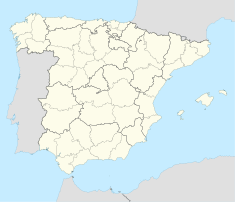
Poblet Abbey, otherwise the Royal Abbey of Santa Maria de Poblet, is a Cistercian monastery, founded in 1151, located at the foot of the Prades Mountains, in the comarca of Conca de Barberà, in Catalonia (Spain). It was founded by Cistercian monks from France. The main architect was Arnau Bargués.

Carcastillo is a town and municipality located in the province and autonomous community of Navarre, in the north of Spain. It is located 70 km from its capital, Pamplona. Until the middle of the 19th century it belonged to the abbey of Santa María de la Oliva. This site is a Cistercian monastery 2 km from Carcastillo. The town is on the banks of the river Aragón to the north of the Bardenas Reales.
Fitero is a town and municipality located in the province and autonomous community of Navarre, northern Spain.

The Abbey of Santa María la Real de Las Huelgas is a monastery of Cistercian nuns located approximately 1.5 km west of the city of Burgos in Spain. The word huelgas, which usually refers to "labour strikes" in modern Spanish, refers in this case to land which had been left fallow. Historically, the monastery has been the site of many weddings of royal families, both foreign and Spanish, including that of Edward I of England to Eleanor of Castile in 1254, for example. The defensive tower of the abbey is also the birthplace of King Peter of Castile.
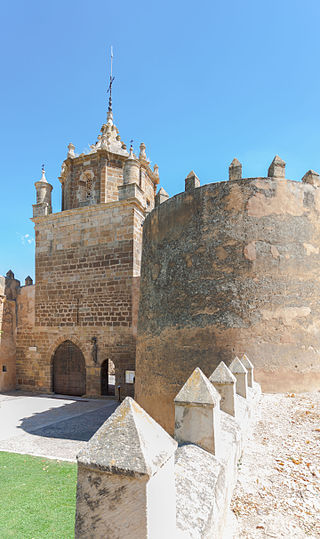
Veruela Abbey is a Cistercian abbey dating from the 12th century. It is situated near Vera de Moncayo, in Zaragoza province, Spain. It was founded in 1146 by Pedro de Atarés.
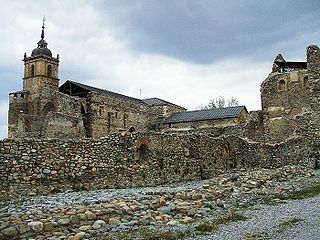
The Monastery of Saint Mary of Carracedo or the Monasterio de Santa María de Carracedo is an inactive abbey and palace complex, now in semi-restored state near the town of Carracedelo, province of León, Castile and León, Spain. Founded in the tenth century by the Benedictine order, it lies near the Way of Santiago in Northern Spain.

Sobrado Abbey, is a Cistercian monastery in the province of La Coruña, Galicia, Spain. It is situated in the municipality of Sobrado, about 9 km east of Corredoiras and about 46 km southeast of Betanzos, at an altitude of 540 m above sea level.

Rioseco Abbey is a former Cistercian abbey situated in Rioseco in the Valle de Manzanedo, in the present province of Burgos, near the River Ebro.

Vallbona Abbey, otherwise the Monastery of Santa Maria de Vallbona, is a Cistercian nunnery in Vallbona de les Monges, in the comarca of Urgell, Catalonia, Spain. Founded in the early 12th century, and built between then and the 14th century, it is one of the most important monastic sites in Catalonia. Its church represents an example of transition between Romanesque and Gothic architecture. The abbey was declared a national monument on 3 June 1931.

Santa María de Óvila is a former Cistercian monastery built in Spain beginning in 1181 on the Tagus River near Trillo, Guadalajara, about 90 miles (140 km) northeast of Madrid. During prosperous times over the next four centuries, construction projects expanded and improved the small monastery. Its fortunes declined significantly in the 18th century, and in 1835 it was confiscated by the Spanish government and sold to private owners who used its buildings to shelter farm animals.
Monasteries in Spain have a rich artistic and cultural tradition, and serve as testament to Spain's religious history and political-military history, from the Visigothic Period to the Middle Ages. The monasteries played an important role in the recruitment conducted by Christian aristocracy during and after the progress of the Reconquista, with the consequent decline in the Muslim south of the peninsula.

The Monastery of Saint Dominic of Silos (the Old) (Spanish: Monasterio de Santo Domingo de Silos (el Antiguo)) is a Cistercian convent in Toledo, Spain.

The Monastery of Santa María is a Cistercian nunnery located in Cañas, Spain.
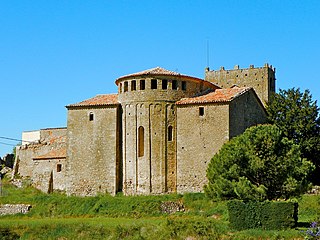
Santa Maria de Serrateix is the Romanesque church of a former Benedictine abbey located on the BV-4235 road in Serrateix in the comarca of Berguedà, Catalonia.
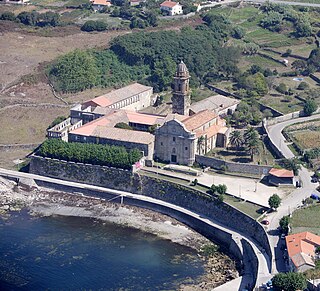
The Royal Monastery of Santa Maria de Oia is a former Cistercian monastery, founded in 1137. It is located in the province of Pontevedra, in the autonomous community of Galicia, Spain. It was declared a Bien de Interés Cultural landmark in 1931. The monastery is listed in the Register of Assets of Cultural Interest of Galicia in the list corresponding to the Province of Pontevedra, in the municipality of Oia, Spain.

The Monastery of Pelayos is a Cistercian monastery in a state of ruin located in Pelayos de la Presa, Community of Madrid.

